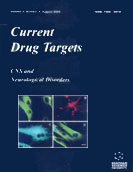Abstract
The possibility of repairing brain lesions is a crucial issue. Knowing how regeneration occurs allows novel concepts in the process of protecting the nervous system, in other words to induce and to develop neuroprotection. Brain insults cause irreversible tissue damage by at least three mechanisms: First, through consequences of mechanical disruption of neurons or their projections; secondly, through biochemical or metabolic changes that are initiated by the insult; and finally, through inflammatory reactions or gliotic changes. The cellular elements and the chemical neuro-mediators involved in brain injury act via interconnections between the cellular elements and their secretions; the immune system and the nervous system are highly regulated in normal physiology, which benefits the organism. When these cells suffer insults in the central nervous system (CNS), the connections between the systems are altered; these systems act together to strangulate the tissue, depriving it of the local control over microcirculation and necessary oxygen, rendering membrane potentials useless to modulate neuronal function. Surgical interventions during the stages of brain injury continue to progress as do biochemical and bioelectric therapeutics during the chronic and rehabilitation stages. There is some hope, too, for effective neuropharmacological intervention. The fact that chemical mediators are already part of normal physiology, whether during development or adulthood, means that their activity can be modified by specific agonists and antagonists to restore homeostasis or to promote the safe pathways that can lead to regeneration. This is the orientation of much of current basic and clinical research. During the past decade considerable experimental and clinical data have been accumulated regarding cellular and biochemical events associated with brain repair.
Keywords: oxygen species (ros), neurodegenerative diseases, brain derived neurotrophic factor (bdnf), nerve cells, glutamate, nmda receptor, synaptic transmission, adenosine receptors, hypoxia, trauma
 2
2

















